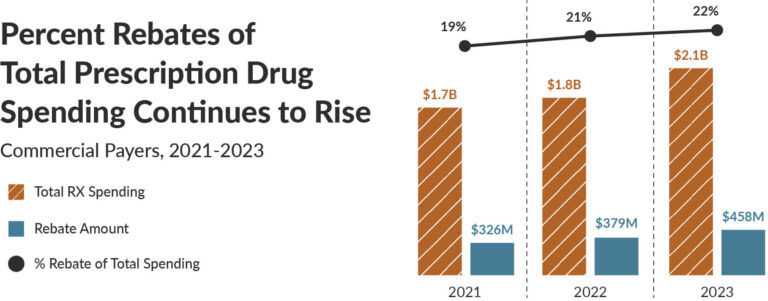Prescription Drug Rebates in Colorado
Prescription drug spending is the fastest growing category of health care spending in Colorado. As costs continue to rise, consumers, policy makers and others are actively seeking solutions to address prescription drug prices. Prescription drug rebates have the potential to reduce prescription drug spending and reduce patient and employer premiums, yet some argue that rebates are driving up overall spending by incentivizing the use of higher cost drugs. This analysis shows drug rebates as a percentage of overall spending by payer type in Colorado to identify how rebates are impacting overall prescription drug spending over time.
About the Report
Use Cases
Policymakers
- Use this information to understand how drug rebates are impacting overall prescription drug spending by payer and drug category (brand, specialty, generic).
- In June 2021, Colorado passed SB 21-75 establishing the Prescription Drug Affordability Board to review high-cost drugs and potentially set payment limits for those they determine to be unaffordable. Overseen by the Colorado Division of Insurance (DOI), the bill names the CO APCD as a primary source of information to inform their work.
Employers
- Request and ensure that rebate dollars are being shared with you by your PBM and health insurance company per HB 22-1370, and design benefit plans to limit the use of specialty and brand drugs when alternatives exist.
Researchers
- Study the pros and cons of drug rebates, their impact on utilization and prices of specialty and brand drugs, and how this affects spending and other clinical outcomes.
Consumers
- Ask your health providers about alternative drug options, including generics, that may provide the same results at a lower cost.
